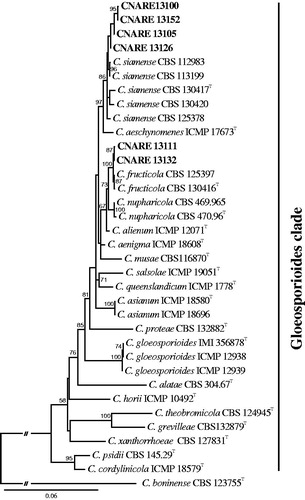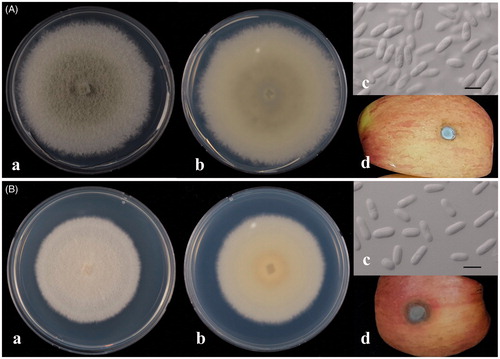Figures & data
Table 1. Information and GenBank accession numbers of Colletotrichum strains isolated this study.
Table 2. Comparison of the morphological characteristics of the strain used in this study with those of previously reported C. fructicola and C. siamense.
Figure 1. Maximum likelihood phylogenetic tree based on the concatenated dataset (ITS, ACT, CAL, CHS-1, and GAPDH) used to identify Colletotrichum strains isolated from bitter rot on apple in Korea. Bootstrap scores greater than 50 are presented at the nodes. The scale bar indicates the number of nucleotide substitutions per site and the letter Tindicates ex-type strains. The strains originating from bitter rot on apple are indicated in bold.

Figure 2. Colletotrichum fructicola CNARE13132 (a) and C. siamense CNARE13126 (b). (a) Colony morphology on potato dextrose agar (PDA) after 7-day culture at 25 °C (front); (b) Colony morphology on PDA after 7-day cultures at 25 °C (reverse); (c) Conidia Bar scale, 10 μm (micrometer); (d) Symptoms induced by artificial inoculation.

